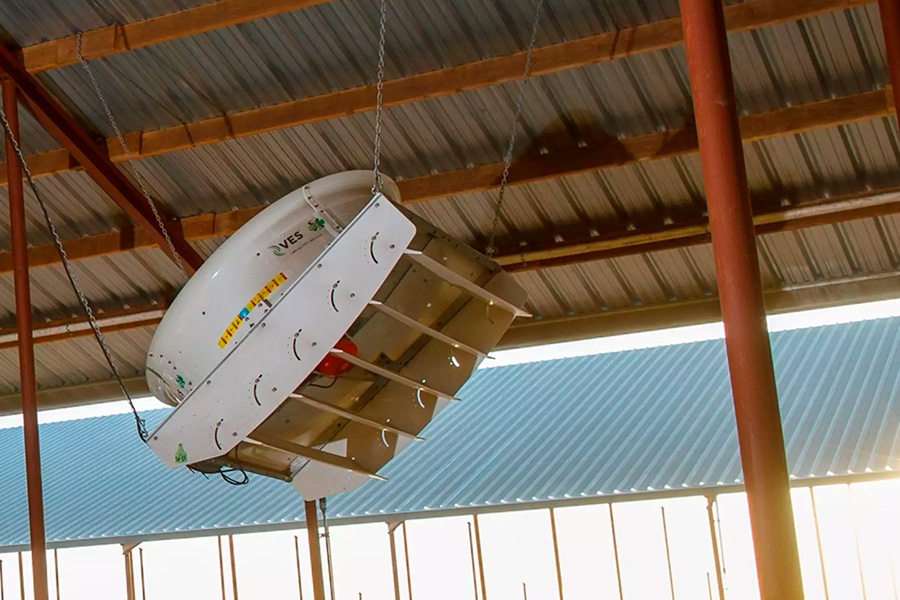- English

Good ventilation in the dairy barn is not a luxury; it is a crucial investment that can have a significant impact on a farm’s profitability. Ventilation systems not only improve air quality but also regulate temperature, reducing heat stress and optimising cow comfort, among other things. By understanding the impact of ventilation on your farm, you can make informed decisions and maximise profits. Huw takes us through his expertise.
Huw Jones has years of international experience in helping dairy farmers identify the optimal ventilation strategy for their barn, taking into account the crucial aspect: Return On Investment (ROI). He asks an essential question: “How often do you want your fans to run and how powerful do you want them to be?” To answer this question, he explains that the impact of ventilation on various aspects of dairy farming should be investigated. This is because determining the value and effectiveness of ventilation systems in your dairy barn is in several aspects: reproduction, milk production, claw health and heat stress.
Breeding
Ventilation plays a crucial role in optimising pregnancy rates in dairy cows. Insufficient air circulation and increased humidity levels can lead to heat stress. This can result in fertility problems such as reduced conception rates and increased embryonic loss. By implementing a well-designed ventilation system, farms can maintain optimal air quality, reduce the risk of complications and improve overall fertility. Improved pregnancy rates translate directly into increased herd size and ultimately improved profitability.
Milk production
The productivity of dairy cows is directly linked to their environmental conditions. Insufficient ventilation can contribute to higher concentrations of polluted air, increased heat stress and poor air quality, all of which can hamper milk production. Cows exposed to better ventilation systems experience improved comfort, reduced stress and better overall health. As a result, they exhibit higher milk yields and better milk quality, leading to increased revenue and profitability for the farm.
Claw health
A lack of ventilation can lead to an increase in claw infections, potentially causing lameness in dairy cows. When cows are hot, they do not lie down. And as lying down time decreases, the risk of claw problems is higher and milk production also decreases. Monitoring the frequency of lameness gives insight into the impact of ventilation on cow health and overall farm profitability.
Heat stress
Heat stress is a common challenge in dairy farming, especially during the hot summer months. Insufficient ventilation and cooling exacerbates heat stress in cows, leading to reduced feed intake, reduced milk production and overall poor cow welfare. Combining ventilation with cooling solutions, such as the RdB-Soaker line, can alleviate heat stress and keep cows comfortable. Good airflow and cooling mechanisms maintain optimal body temperature, promote milk production and overall cow welfare, resulting in higher profitability.
So good ventilation is an essential part of a successful dairy farm!
Click here for more company info